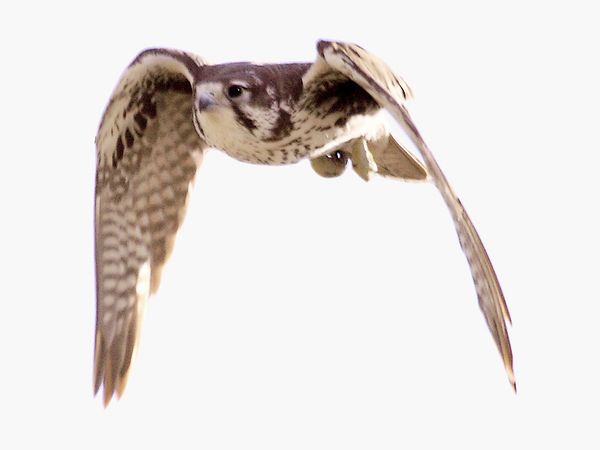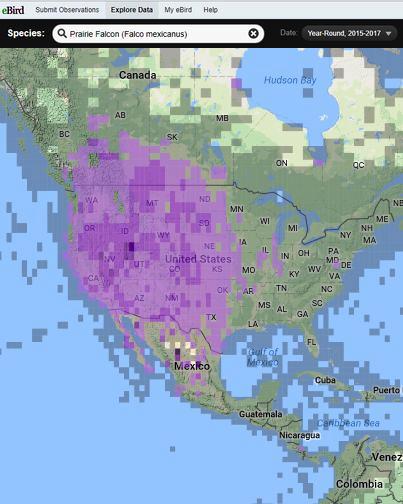
There are six falcons native to North America — gyrfalcon, peregrine, prairie falcon, aplomado falcon, merlin and American kestrel — but back in 2010 I had seen only four of them because I hadn’t traveled west or south to the places that prairie and aplomado falcons call home.
That year I didn’t need to leave Pennsylvania to find a prairie falcon. Since 2005 a single bird had spent the winter near Mud Level Road in Cumberland County. In November 2010 I decided it was time to chase that Life Bird.
Prairie falcons (Falco mexicanus) range in North America from the Great Plains westward to the Pacific coast. They move in spring and winter but normally travel north-south or up-slope/down-slope. Pennsylvania is not only wetter than their usual habitat but is very far away. The purple squares below show where they were reported on eBird, 2015-2017. The darkest purple is their most frequent location.

When a prairie falcon was first noticed at Mud Level Road in late fall 2005, birders assumed it was an escaped falconer’s bird though it showed no signs of a former life, no jesses, no radio tracking antenna. They soon found out it roosted overnight at a nearby quarry. Then year after year the bird came back in November and left in early spring, obviously migrating. From the winter of 2005-2006 through the winter of 2013-2014 he returned for eight more years.
Like the peregrines I can identify as individuals because they’re the only two on territory at Pitt, this prairie falcon was unique because of his location. He was not just any falcon. He was the prairie falcon.
On Throw Back Thursday read of my near miss in finding this unique Life Bird three hours from my Pittsburgh home: Prairie Falcon at Mud Level Road.
(photo of a prairie falcon in Colorado by Pat Gaines on Flickr, prairie falcon range map via eBird sightings, 2015-2017. Click on the images to see the originals)
Aww Kate, I got a little teary-eyed reading this. HAHA Yay for you!